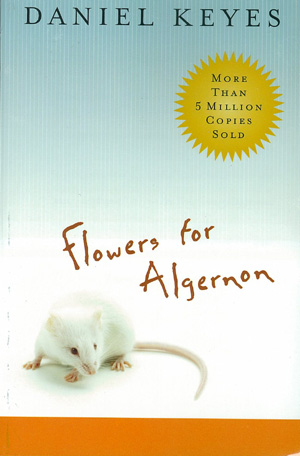Average-level ability students would be able to benefit from the texts I’ve selected because many of the lessons, specifically the ones centered around journals and performing skits as formative assessments, call for a deeper understanding of the setting of the story. Students would be able to connect some of Harper Lee’s real experiences with events in the text while also identifying with the tragedy of seeing the kidnapping of Emmett Till. The degradation of the South after the Civil War is also detailed in the Freedom Road text, allowing students to view some of the Southern characters in the novel in a less villainous light. The websites selected allow students to effectively research and construct their compositions for the unit while also publishing them in an exciting modern format. Collecting these texts for the students of this unit allows the educator to give context for a time gone by, and strengthen the comprehension of literature and the application of knowledge for every student in the class.
Madden, K. (2009). Up Close: Harper Lee. New York: Viking.
Flesch-Kincaid Estimate: 8.1
Part of the Up Close series, focusing on twentieth-century masters of art and science such as Rachel Carson, Johnny Cash and even Oprah Winfrey, Kerry Madden’s biography of the reclusive Harper Lee contains 224 pages of insight to the lifestyle and creative process of the author of To Kill a Mockingbird. The opening chapter of the book contains a detailed overview of the only published novel by Nelle Harper Lee, then going into a detailed discussion of her childhood and how those events shaped her worldview in the novel. Page 57 details the origins of the character of Arthur “Boo” Radley, most likely based on Alfred “Son” Boulware, a seemingly strange loner in Lee’s childhood who she longed to comprehend, and empathize, with. Page 117 details the influence that Truman Capote’s In Cold Blood held over Lee, and her perspective on drafting a novel based on the wanton murder of a young black innocent. By the time the book reaches 165 pages, Lee has published a wildly acclaimed novel that fostered a breathtaking film adaptation, giving her a free trip to the White House to visit President Johnson.
For the purposes of pedagogy, however, readers would focus on the beginnings of the novel to draw parallels between the life of Harper Lee and the events of the novel for a journal-based lesson. Students would read the first chapter of the novel in class and then their homework assignment would be to read a handout of the first chapter of Up Close: Harper Lee. The next day would involve students writing a prose paragraph or two of their own lives, modeled after Harper Lee writing about her own experiences. Throughout the unit, students would be referred back to the text as events parallel the life of Harper Lee herself.
Osborne, L. B. (2009). Reconstruction. In Traveling the Freedom Road: From Slavery & the Civil War through Reconstruction (pp. 79-118). New York: Abrams Books for Young Readers.
Flesch-Kincaid Estimate: 9.6
Thoroughly loaded with photographs and transcripts from Civil War-era speeches, Traveling the Freedom Road is a spectacular grade-level text for students. Written like a textbook with the detail of a novel, the book details the factors leading up to the Civil War, including political disputes between states and the federal government. Entire pages are dominated by copies of preserved documents as well as commentary from established historians on said documents. The friendly layout of the book allows the frequently mature subject matter to not alienate more cautious readers. The book is at its best during sections like the former slave testimonies, displayed on page 86, using direct testimony similar to the next book in the bibliography.
For the purposes of the unit, I would pair the “Reconstruction” chapter with the Mr. Burnett site in order to activate prior knowledge about the state of the South after the Civil War. As an educator, I would be less concerned with the rest of the Civil War history, as opposed to the direct effects of the war on the people of the South. For the first lesson of the unit, I would pass out packets containing the chapter to all of the students and leading a choral reading for ten minutes. After starting the first two paragraphs, I would allow students to take over with a reading guide to be completed through the rest of the class, in a partnered activity. The reading guide would focus on the parts of the chapter dealing with the plights of former slaves, and the hate groups arising out of the white strife in the South. Osborne’s text would be extremely useful to offer a plethora of visuals to complement some of the more text-heavy offerings by some of my other trade books.
Wright, S., & Boyd, H. (2010). Simeon's Story: An Eyewitness Account of the Kidnapping of Emmett Till. Chicago: Lawrence Hill Books.
Flesch-Kincaid Estimate: 7.3
From the very beginning of Wright’s book, it is made clear that he seeks to understand a problem from his childhood, a trauma against a black person so heinous that it rivals the fate of Tom Robinson within To Kill a Mockingbird…except the kidnapping of Emmett Till actually happened. The autobiography is written in an accessible way, focusing first on Wright’s childhood life with his family (a focus on his father as provider also draws a strong parallel to Lee’s novel). Wright is also quick to introduce Till not as a sacrificial figure, but as a child himself, referring to him as “Bobo”, a nickname between first cousins. Beginning with page 59, Wright is sure to detail the events of the abduction in disturbing detail, giving a graphic description of the events that unfolded, not unlike the testimony that Mayella Ewell delivers in To Kill a Mockingbird. The major insight of the text follows the description of the abduction, as Wright relates his personal experience to the movement led by Dr. Martin Luther King Jr. and other Civil Rights leaders.
While teaching this novel, it seems extremely important to me to contextualize both Harper Lee’s side of the story (the outsider as both Scout Finch and Boo Radley), as well as the plight of African-Americans in the South. After my students complete reading Mayella Ewell’s testimony in the novel, I would present them with select excerpts from Simeon’s Story, focusing on the abduction and murder of Emmett Till to connect the events in the novel to real racial relations in the United States. I would present the text with a Venn Diagram for comparing the truth of the Emmett Till events and the murder of Tom Robinson. Because the reading level for the book is a little lower (it also contains more photographs and maps than the Harper Lee biography), it may entice students to acquaint themselves with the tragic history behind To Kill a Mockingbird, both on the side of Harper Lee and the black community.
Burnett, E. (n.d.). Reconstruction. In Civil War and Reconstruction. Retrieved December 5, 2011, from http://www.mrburnett.net/civilwar.html
Eric Burnett is a Social Studies teacher who constructed an encyclopedic website centered on the Civil War and Reconstruction of the South, featuring timelines and direct excerpts from speeches given from leaders like Lincoln, Grant, and Lee. The primary site contains many statistics and student resources indicating not only the deadliest battles of the Civil War but also the most damaged regions of the South and how much money was lost. If students explore the site further than what is used for the unit, they will find helpful links to extensive biographies on Lincoln and others and complete texts of Frederick Douglass’s autobiography and Harriet Beecher Stowe’s Uncle Tom’s Cabin. The site is written in a friendly manner, presenting history in a warm-prose style that could welcome young readers.
In order to emphasize the state of the South at the beginning of the novel, I would direct students specifically to the section of Burnett’s site labeled “Reconstruction”. Under this heading, there are three links. The last major link leads to a twelve-part essay series detailing every effect of Reconstruction, while the other two links include timelines and excerpts from Lincoln’s thoughts on possible Reconstruction techniques. Using technology and history principles in the English classroom is important for teaching this unit, so I would allow students to use the computer lab in groups of two to access one of the twelve parts of the Reconstruction essay. Students would become experts on their section during the first twenty minutes of a class period and then present their findings in five minutes.
Scribd [Self-publishing resource]. (2011). Retrieved December 5, 2011, from Scribd Inc. website: http://www.scribd.com
Scribd.com is a website dedicated to allowing writers of all fields to freely publish and display their work online in a literary setting that emphasizes the authorial side much more than a simple blog. The site uses the best features of a social networking site, such as following other users and keeping a constant feed of new material in your literary queue. When used in an educational format, educators are able to limit who can access the student work and how they are classified on the website itself. Teachers can check to see how many posts students have provided and how much criticism they have provided for other students, while the young authors themselves are able to view their statistics in terms of reading performance within the entire site and whatever writing “cohort” they would fall into with the educator.
To use Scribd within the classroom environment would require tailoring it to my needs as a high school English teacher. Students in that environment often require a push to finish the product, and online publication may be the secret. When students reach the end of the composition lessons of the class, a final publication grade would be assessed after they submit their stories to a private circle just consisting of classmates on Scribd. After a day or two of allowing students to read and comment for extra credit, students would vote on the quality of the essays anonymously. The three best essays would be posted on a Mr. Conner account on Scribd, allowing the students to see their work evaluated on the internet. The students would only be able to submit to Scribd after a final copy is printed and submitted to the teacher, stressing the importance of proofreading and the relatively recent ability for any author to have a venue for academic and creative work.





